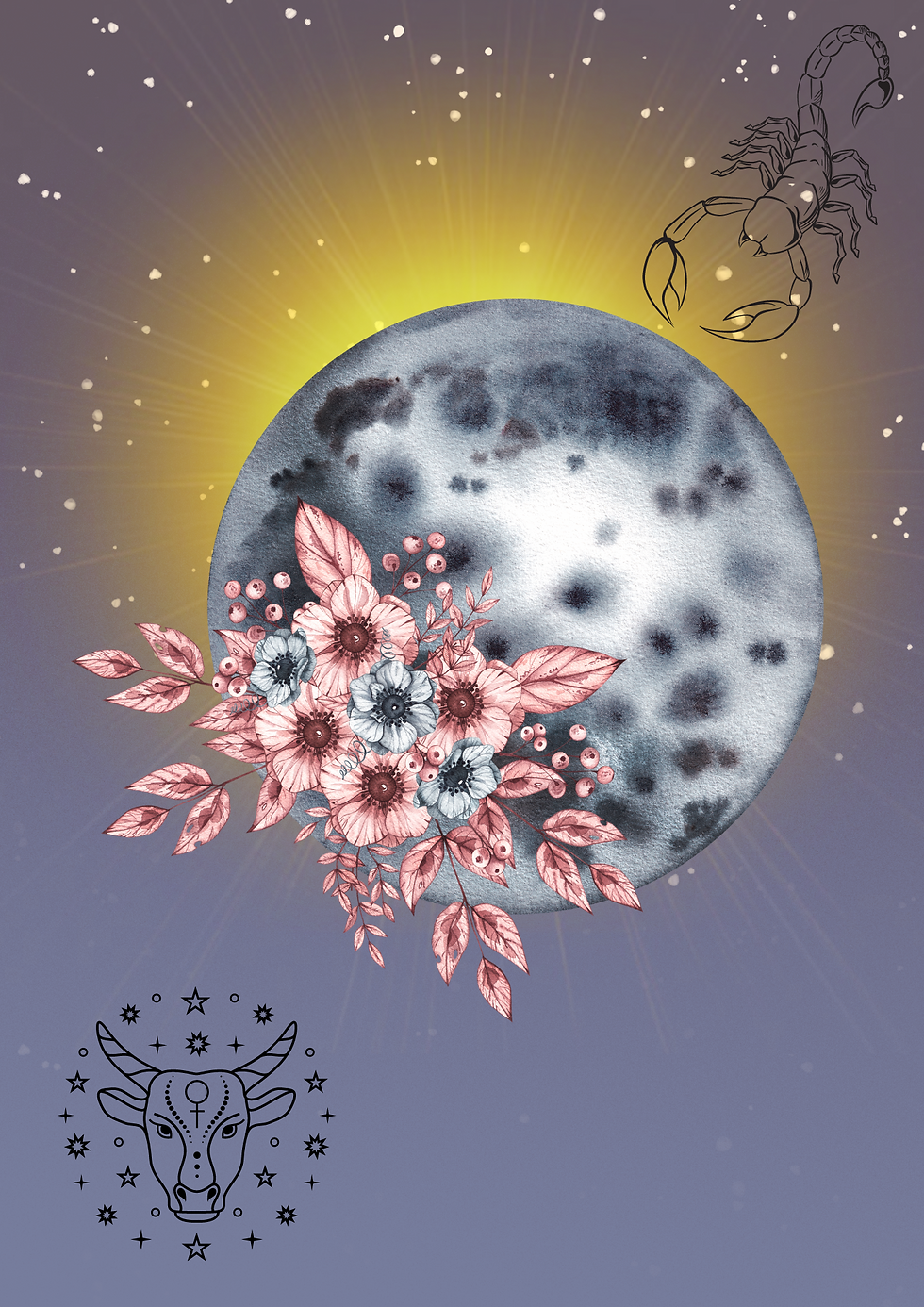Yoga and the 5 Elements
- Raiza Red

- Jan 18, 2021
- 5 min read
Updated: Oct 13, 2021
Earth, air, fire, water, ether.
The primordial elements of creation are not only found in nature but within ourselves.
The five crucial elements, or Pancha Maha Bhoota are thought to have originated during the Big Bang. Within them, they cradle the essence of all creation. The different combinations of these components are the very building blocks of the universe, as well as our own bodies. The perfect balance of these constituents within us create harmony of spirit and a healthy body. So how can we use these elements in our Yoga practice for wellness?
In Ayurveda, Yoga's sister science, Those five elements are :
Prithvi (Earth)
Jal (water)
Agni ( fire)
Vayu (air)
Akasha ( ether/space).
The particular combination of elements that are most dominant in you make up your Prakruti Dosha, or general constitution. In Traditional Indian medicine, the doshas are delineated into 3 elementally based categories to describe the fundamental regulatory principles of the body.
The Three Doshas are:
Pitta: Fire/ Water
Vata: Air/ Ether
Kapha Earth/Water

To best incorporate the five elements into your Yoga practice and daily life, you must first learn your Dosha. In order to maintain optimal wellness, knowing your dosha is crucial in identifying what shifts you out of balance. Yoga can be a useful tool for sustaining their balance and reshifting back into equilibrium. Life stressors, our environment and even seasonal changes can alter our predominate dosha. The imbalance is known as our Vikruti dosha. Our vikruti tells us which dosha is excessive or insufficient.
**My online Raiza Red Dosha test can be emailed to you upon request!
As the ever-changing cycles of nature fluctuate, altering the elements outside, they also alter those within us. For example, rain may increase the element of water in our own body, where as excessive sun or heat can stoke the fire element,
qualities in us. We can counter balance an excessive element by counteracting it with opposite qualities. Hot, sunny days may call for cooling foods, drinks, and a slower, restorative Yoga practice. Colder, windy weather may call for warm food and drinks and a more vigorous , heating asana and pranayama sequence. Thankfully, we can tweak our Yogic practices accordingly with the seasons and cycles of nature to boost our immune system, prevent disease and thrive in any environment.
Below is a short guideline on each element's properties and Yoga practices to balance them:

Agni ( fire) :
Chakra: Manipura - will power, purpose, identity
Mental state: Confidence, motivation, self-esteem, independence, determination
The element of Shiva, fire represents heat, light and transformation.
Physically: digestion, metabolism, body heat regulation, 'digesting' emotions and experiences
When balanced we feel self confident, strong, motivated, disciplined and all qualities associated with power and success.
When unbalanced we may experience irritability, quick to anger, impatience, inflammation, digestive issues or fever.

Vayu (air):
Chakra: Anahata ( heart)- love, relationships, boundaries
Mental state: Love, Metta- Compassionate awareness, intellect, joy
Physically: Pulse, breath, heart, nerve synopsis, blood & lymphatic circulation, thought processes
Air, the element of Vayu, the Wind God, represents motion, movement, flow.
When balanced it personifies vivaciousness, energy, lightheartedness, adaptability to change, a free spirit.
When askew, air can manifest as anxiety, indecision, conflict in relationships and an inability to be present. Physically, an imbalance of air causes hormone disruption issues, adrenal fatigue, dry skin, constipation, insomnia and can lower the immune system.

Jal (water):
Chakra: Svadhisthana (solar plexus)- sensuality, flow, sexuality
Mental state: Fun, pleasurable, creative
Physically: fluidity /flow: relates to all body fluids: reproductive, saliva, synovial flood, lymph and blood, etc
Water is nourishing, cleansing and sustaining. We are born of fluid and manifest into the world through the very life giving fluid of our mother's womb. Energetically water is the source of our emotions and helps us express our inner most feelings. It connects us to our sensual nature.
A balanced water element can manifest as a healthy reproductive/urinary, circulatory blood and lymph system. A healthy glow to the skin, hair and nails also signals proper hydration. Water imbalances can show up as shifts in the amount and quality of bodily fluid. This can cause painful joints, constipation or diarrhoea, excessive sweating, reproductive issues, blood disorders and digestive issues. Out-of balance Water element is associated with mental disturbances like addiction, repressed emotion, lack of creativity, eating disorders, sexual disorders.

Akasha (Ether):
Chakra: Vishuddha (throat): Truth, communication, open minded, acceptance
Mental state: balanced, authentic, expressive, clear
Physically: Space
Ether manifests as all the "spaces" in the body, down to our cells and in all body cavities. It governs the throat, our sense of self- expression and truth. It is also the seat of our authentic, true self or soul.
Imbalanced, Ether can cause physical symptoms of a sore throat and neck, jaw pain, issues with the tongue, ear infections and tinnitus. On an energetic level, it can makes us feel blocked, claustrophobic, limited and pressed for time. When equally aligned, ether opens channels for freedom of expression, truth, acceptance and open communication. Equanimity of ether in a dosha manifests physically as a clear, pleasant voice. It bestows the qualities of honesty, clear speech, patient listening and an open mind

Prithvi (earth): Grounding, safe, calm, supportive
Chakra: Muladhara ( Root): origin, survival, stability, basic needs
Mental state: Stable, secure, grounded
Physical: Heavy, dense, thick, solid.
Earth, the densest element is cool, rough, heavy, immovable. It represents solid matter. It correlates to the structures in the body such as bones, muscles, skin, nails, and creates the fleshly vessel we inhabit in this lifetime.
Unbalanced, physically it appears as balding or weak, fragile hair, skin issues, fragile, yellowed or malformed nails, bone disorders, loss of appetite, inflexibility and exhaustion. In excess, it can cause laziness, mental lethargy, anger, aggression, materialism. In dearth, the Earth element invokes fear, insecurity, mental instability, sense of lack and greed.
Ayurveda suggests the key to wholeness and wellness is balance of the 5 elements through yoga, diet and lifestyle. So which style of Yoga is right for you? Depends on your vikruti today!
Vinyasa is said to generally increase air and ether (Vata), Yin and Hatha yoga increases earth and water ( Kapha) and Ashtanga raises fire and water elements ( Pitta). Asanas and pranayama can help us invoke each of these elements. Below are some asanas and practices to help you connect to each specific elements. Mix and match the asanas and pranayamas below to create a practice that synergises them together to best suit your needs.
Postures and Pranayama to channel the elements:
Earth:
Balasana (Child's pose)
Taasana (Mountain pose)
Virabhadrasana 1,2 (Warrior 1,2)
Savasana (Corpse pose)
Pranayama: Samma vritti - 4 part box breath
Air:
Ustrasana (Camel pose)
Urdhva Dhanurasana (Wheel pose)
Salabasana (Locust pose)
Setu Bandha Sarvangasana ( Bridge pose)
Pranayama: Nadi shodhana
Ether:
Matsyendrasana (Fish pose)
Bitilasana (COW)
Halasana (Plow pose)
Sirsasana ( Headstand)
Pranayama: Ujjayi
Water:
Badhha Konasana (cobbler's pose)
Eka Pada Rajakapotanasana ( Pidgeon pose)
Utkata Konasana (Goddess pose)
Utthan Pristhasana (Lizard pose)
Pranayama: Sitali
Fire:
Paripurna Navasana (Boat pose)
Kumbhakasana (Plank)
Dhanurasana (Bow pose)
Bakasana (Crow pose)
Pranayama: Kapalabhati
Want to go deeper? Join my Elemental Yoga class series in spring 2021!
Registery and more details to come soon.
See you on the mat!

















Comments